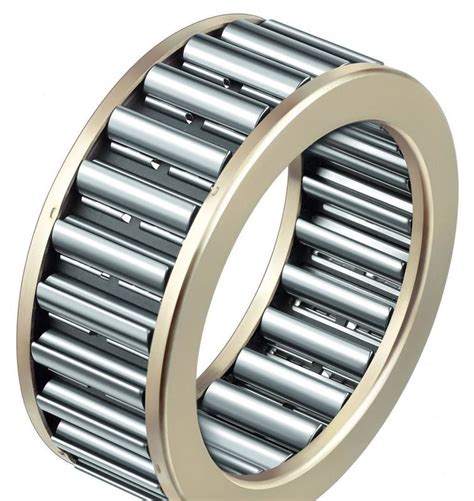The Ultimate Guide to Needle Roller Bearings: Design, Types, and Applications
Needle roller bearings are an essential component in various industrial applications, offering exceptional load-carrying capacity, high precision, and low friction. This comprehensive guide delves into the world of needle roller bearings, providing an in-depth understanding of their design, types, and diverse applications.
Design and Construction of Needle Roller Bearings
Needle roller bearings consist of three primary components:
-
Inner ring: A hardened steel cylinder with a smooth raceway on the inside.
-
Outer ring: A hardened steel cylinder with a smooth raceway on the outside.
-
Needle rollers: Small, cylindrical rollers with the same diameter as the needle width.
Needle rollers are arranged radially between the inner and outer rings, providing a high linear contact area for load distribution. This design enables needle roller bearings to handle heavy loads in a compact space.
Types of Needle Roller Bearings
Needle roller bearings are classified into several types based on their design and application:


| Type |
Description |
| Drawn cup |
A thin, cylindrical bearing with an open end for easy mounting and lubrication. |
| Cage |
Needle rollers are held in a cage to maintain equal spacing and prevent skewing. |
| Full complement |
The maximum number of needle rollers are packed into the bearing, providing the highest load capacity. |
| Thick-walled |
A stronger outer ring for applications with high radial loads. |
| Thin-walled |
A lightweight bearing for applications where space is constrained. |
| Self-aligning |
Designed to accommodate shaft misalignment by allowing the inner ring to swivel within the outer ring. |
Advantages of Needle Roller Bearings
Needle roller bearings offer several advantages over other bearing types:
-
High load capacity: The large contact area between the rollers and raceways enables needle roller bearings to withstand heavy loads.
-
Compact design: The compact size of needle rollers allows for space-saving installations.
-
Low friction: The small diameter and smooth rollers minimize friction and reduce energy consumption.
-
High precision: Needle roller bearings provide precise guidance and prevent radial displacement.
-
Durability: Hardened steel construction and efficient lubrication extend the bearing's lifespan.
Applications of Needle Roller Bearings
Needle roller bearings are widely used in various industries, including:
-
Automotive: Transmissions, steering systems, and engine components.
-
Industrial machinery: Machine tools, pumps, and gearboxes.
-
Aerospace: Actuators, landing gear, and flight controls.
-
Medical equipment: Surgical robots, prosthetics, and imaging devices.
-
Consumer products: Appliances, power tools, and electronic devices.
Design Considerations for Needle Roller Bearings
When selecting and designing with needle roller bearings, several factors should be considered:
-
Load capacity: Determine the bearing's load requirements to ensure appropriate capacity.
-
Lubrication: Needle roller bearings require proper lubrication to minimize friction and wear.
-
Space constraints: Consider the size and weight limitations of the application.
-
Temperature range: Ensure the bearing can operate within the expected temperature range.
-
Misalignment: Select self-aligning needle roller bearings for applications with potential shaft misalignment.
Effective Strategies for Using Needle Roller Bearings
-
Proper mounting: Ensure the bearing is correctly aligned and secured to prevent premature failure.
-
Regular lubrication: Maintain the bearing's lubrication according to the manufacturer's recommendations.
-
Protection from contamination: Use seals or covers to protect the bearing from dirt, dust, and moisture.
-
Avoid excessive loads: Operate the bearing within its designed load capacity to prevent damage.
-
Monitor and inspect: Regularly monitor the bearing's condition and perform periodic inspections for early detection of any issues.
How to Choose the Right Needle Roller Bearing
Choosing the right needle roller bearing involves the following steps:

-
Determine the bearing type: Select the appropriate type based on the application's design and requirements.
-
Calculate the load capacity: Calculate the maximum load the bearing will experience and ensure it meets or exceeds the bearing's capacity.
-
Select the bearing dimensions: Choose the appropriate bearing size based on the shaft and housing bore diameters.
-
Consider lubrication: Determine the type of lubrication required for the application and select a bearing with the appropriate lubrication features.
-
Verify compatibility: Ensure the bearing is compatible with the surrounding components and materials.
Call to Action
Needle roller bearings offer significant advantages in various applications, providing high load capacity, precision, and durability. By understanding the design, types, and applications of needle roller bearings, you can optimize your designs and improve the performance of your equipment. Implement effective strategies for using needle roller bearings to maximize their lifespan and ensure reliable operation.

